Top 5 facts about Cheetahs
Discover more about the Cheetah, the threats they are facing, and what you can do to help.
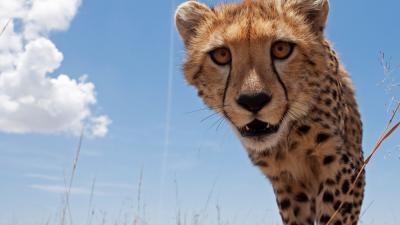
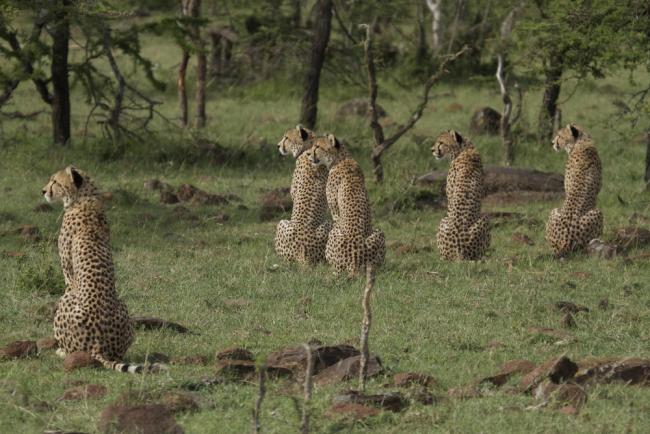
1. There are 5 recognised subspecies of the Cheetah
The wild Cheetah population is believed to be around 6,600 mature individuals and decreasing. They are currently classified under the genus Acinonyx, whose closest living relatives are cougars and jaguarundis—both wild cats are native to the Americas. Altogether, 5 subspecies of cheetah have been described:
- Northwest African cheetah Acinonyx jubatus hecki
- East African cheetah Acinonyx jubatus fearsoni (or A.j. raineyi)
- South African cheetah Acinonyx jubatus jubatus
- Northeast African cheetah Acinonyx jubatus soemmerringi
- Asiatic cheetah Acinonyx jubatus venaticus
All cheetah subspecies are listed as vulnerable by the IUCN, except the Northwest African and Asiatic cheetah which are critically endangered at present.
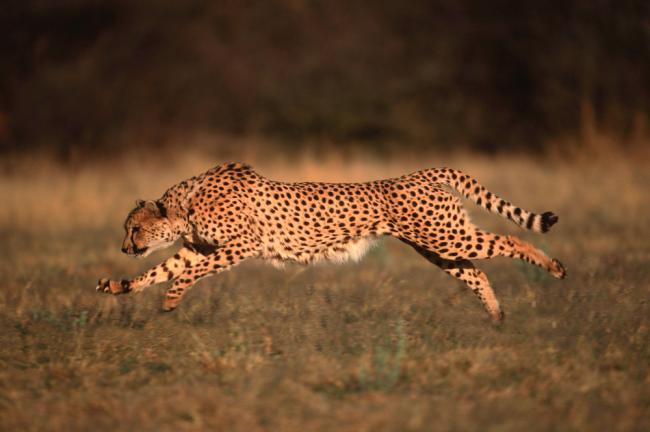
2. Catch me if you can?
Cheetahs are blisteringly fast and can reach speeds up to 64 miles per hour in 3 seconds, making them the fastest land animals in the world over short distances. For comparison with humans, Usain Bolt currently holds the record as the fastest man in the world, with a top speed of around 27 miles per hour. A cheetah can outpace the world's fastest man by more than twice his speed, whether in the wild or on a race track!
But when it comes to endurance, these slender big cats can only maintain their top speed for a short period of time depending on their health and energy levels, as well as the weather and ground conditions. So, cheetahs are known to abandon their hunt even though their body temperatures remain relatively stable when chasing their prey.
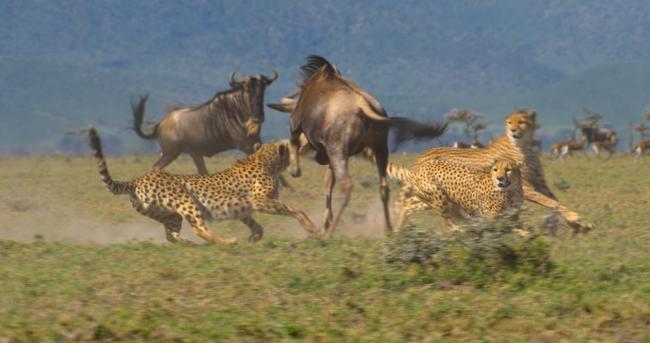
3. Being a predator isn’t easy
Cheetahs hunt a wide variety of prey, mainly small to mid-sized ungulates, which include springbok, duiker, gazelle, kob and impala. But they can also prey on ground-dwelling birds and small mammals such as hares. Male cheetahs are known to form coalitions for territorial protection and hunt much larger prey, such as wildebeest, kudu or eland.
Unlike other African predators, cheetahs rarely scavenge. They are also known to eat quickly and abandon their kills once other predators are spotted, especially in areas with high densities of large carnivores—around 10% of cheetah kills end up being stolen, mostly by lions and spotted hyenas. This could explain why cheetahs prefer to hunt during the day when other predators are least active.
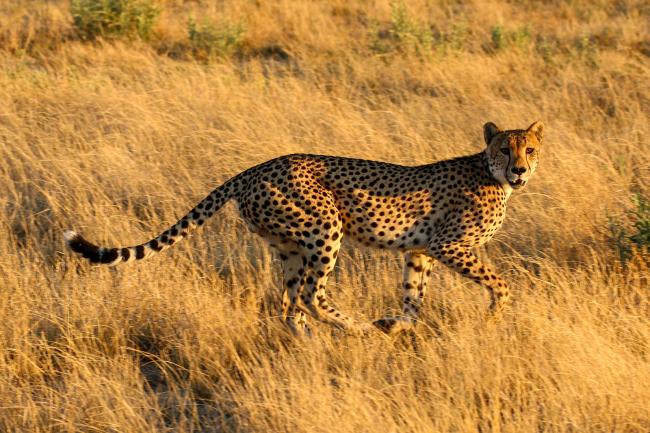
4. Is it a cheetah or a leopard?
Cheetahs are commonly misidentified as leopards, and vice versa, since both big cats have prominent yet similar dark spots on their bodies. But it can get easier to distinguish between a cheetah and a leopard once you know what to look for. Cheetahs boast a pair of dark-coloured curved lines running between their nose and cheeks, while leopards don’t have any unique face markings. The spots on their bodies also differ: the cheetah’s fur is covered with round or oval-shaped spots, whereas the leopard has distinctive spots on its fur called ‘rosettes’, resembling the shape of a rose.
A cheetah is slender, lighter and taller than a leopard, and it also has semi-retractable claws, allowing for swift movements when chasing prey at high speeds. Leopards, on the other hand, are shorter but bulky and powerful big cats with retractable claws, making them excellent tree climbers. Vocally, cheetahs chirp almost like a bird, while leopards roar like other big cats.
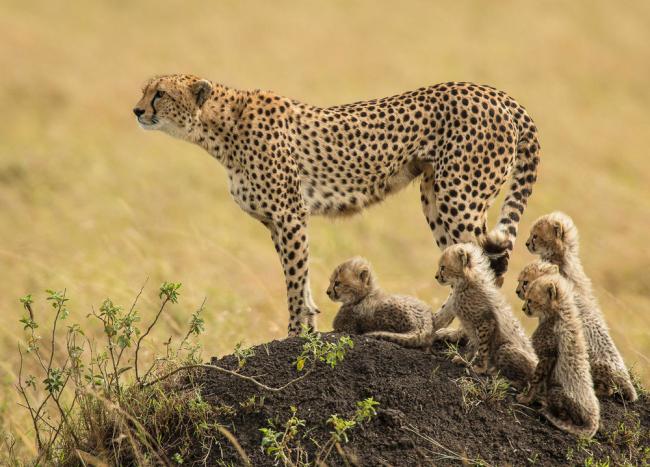
5. They are under threat of extinction in the wild.
Cheetahs were once widespread in Africa, and they also used to roam the Arabian Peninsula and into central India. However, they have disappeared from most of the African continent and can now be found inhabiting only 10% of their historic range. The cheetah’s remaining stronghold is in Southern and Eastern Africa at present. In Asia, wild cheetah numbers have shown a staggering decline with around 80 individuals remaining, but some recent estimates show their numbers as low as 12 individuals. At present, asiatic cheetahs are restricted to the central deserts of Iran.
The remaining cheetah populations face multiple threats, from habitat loss and fragmentation, depletion of wild prey, human-wildlife conflict to infrastructure development.
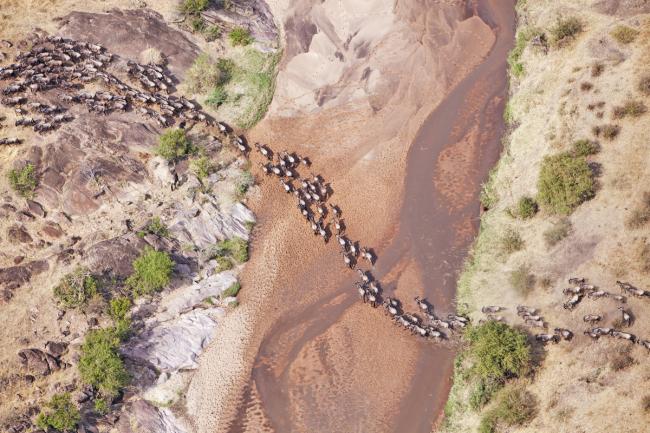
Our work in the Mau Mara Serengeti
One of the most awe-inspiring spectacles of the natural world has to be that of wildebeest braving steep cliffs and crocodiles as they cross the Mara river as part of their annual migration through the Serengeti-Maasai Mara ecosystem. Many other species depend on the river’s water, as do human communities living and working within the Mara river basin.
Over the years, we've worked to promote better land management practices in the Mara, while ensuring a steady flow of the Mara river from Kenya to Tanzania. We’re also helping to establish and improve protected areas of habitat in east Africa, and work with communities to support the development of community land that is unfenced and protected for wildlife.
We also recommend:
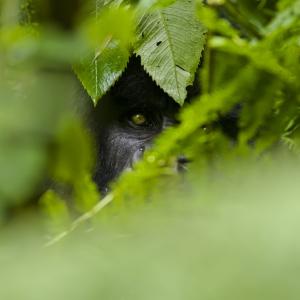 10 of the world's most endangered animals
10 of the world's most endangered animals
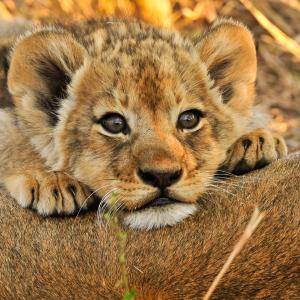 The magnificent lion: the symbol of Africa
The magnificent lion: the symbol of Africa
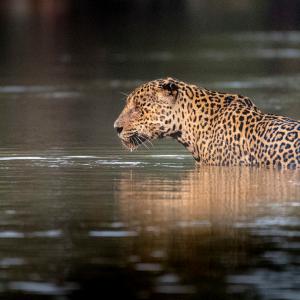 Fascinating facts about animals
Fascinating facts about animals
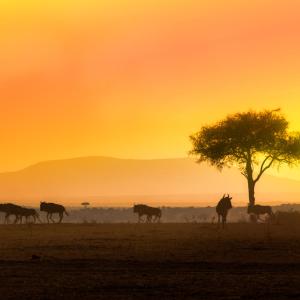 The Mau Mara Serengeti is under threat
The Mau Mara Serengeti is under threat